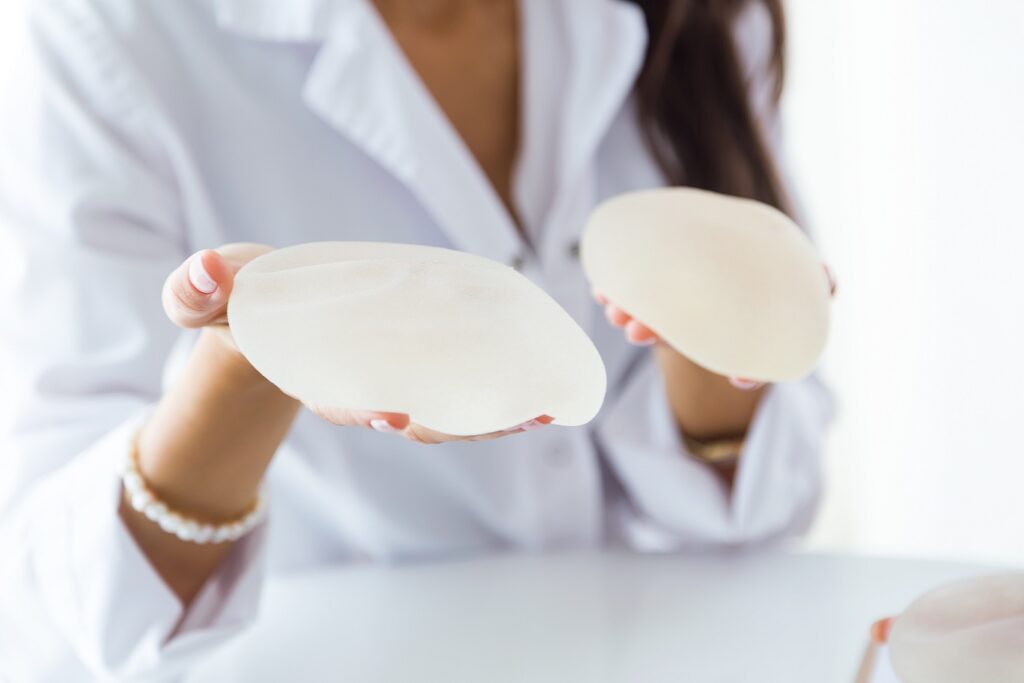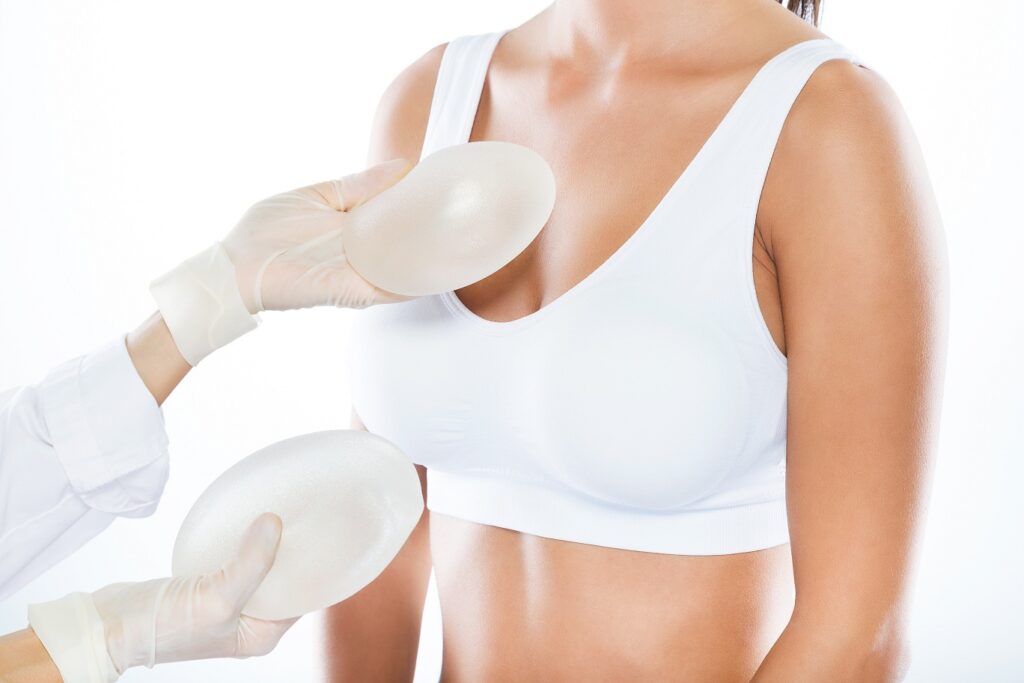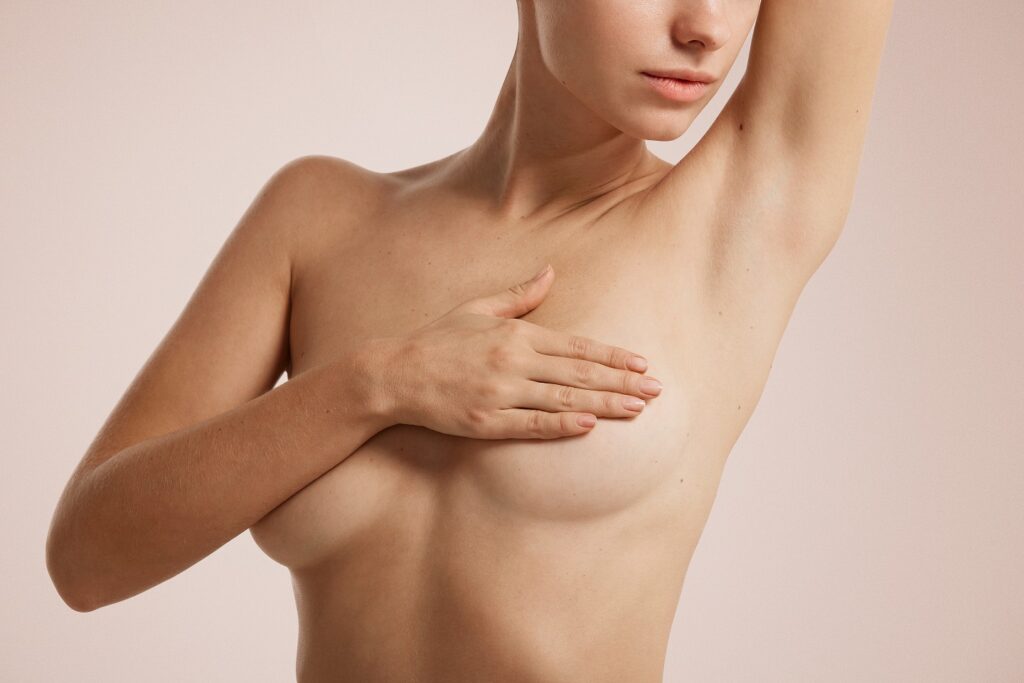Augmentation Mammoplasty
One of the surgical procedures that is most requested by women in recent years is the breast implant, use to increase and model the size of the breasts.
Whichis the bestimplantfor each patient?
This is a question that is very important, because although the most important thing is what the patient desire, the medical examination is vital and the surgeon must choose the type of implant that is going to be used, taking into account aesthetic criteria such as the texture of the patient, height, weight, back width, the musculature of the area, the amount of fatty or glandular tissue that will cover the implant, status of their breasts, if the patient has breastfed (or hasn’t), if the patient have had children.


There are different types of implants depending on their:
- Volume: From 140cc to 500cc and even more.
- Shape : Round and anatomical
- Profile :Super high, high, low, moderate
- Surface : Smooth and textured
- Content : Cohesive silicone or saline
The implants can be placed in different planes or pockets:
- Retroglandular, behind the mammary gland.
- Subfascial behind the muscular fascia.
- Retropectoral behind the pectoral muscle.
Approaches:
- Periareolar: Around the nipple.
- Axillary.
- Submammary.
Benefits:
- Remarkable improvement of a flat chest with small breasts.
- Correction of size asymmetries.
- Improved appearance after pregnancy or weight loss.

Indications:
- Small breasts.
- Correction of congenital or acquired anomalies: Asymmetry, aplasia, hypomastia, hypoplasia.
- Exchange of an old or defective implant.
Procedure:
- The procedure begins with the standing or sitting marking of the place where the pocket that will house the implant will be located, it is designed with a marker in a way that is very symmetrical on both sides.
- Intravenous sedation and local anesthesia.
- Approach through the areola, o periareolar , or submammary groove as decided.
- Formation of the retroglandular, retromuscular, or subfascial pocket.
- Insertion of the chosen implant.
- Drains placement.
- Closure of the incisions.
- Elastic bandage.
- Duration of the procedure: approx. 2 hrs.
Postoperative care:
- It can be hospitalized or ambulatory.
- When at home, receive the prescribed medication.
- Don’t smoke.
- Wear the special 24-hour bra.
- Shower with help for 7 days.
- Do not raise your arms above chest level for 10 days. Also, do not lift, push, or pull anything that can stress the operating area.
- Do not drive until authorized by the surgeon.
- Keep in mind that breast swelling can last 2 to 3 months.
- Postoperative lymphatic drainage.
Additional Recommendations:
- Before surgery, it is important to have an ultrasound that will serve as a basis for subsequent controls.
- Do a very thorough research about the type of implant that will be used in your surgery (brand, content, volume, profile, shape, surface).
- You must be given proof of the brand, type, and size of the implant that was used in your surgery.
- Monitoring and control are extremely important to guarantee a good surgery evolution and operative wounds, avoiding hypertrophic or keloid scars.
- If you are breastfeeding, this is not the time for an implant.
- Never allow any filler (liquid silicone) to be injected, as they can cause cystic lesions and subsequent calcifications that can confuse breast ultrasounds and mammograms.
- Capsular contracture, although rare, is a complication that can occur.
- The placement of the implant does not alter subsequent breastfeeding, therefore avoiding risk to the baby or the mother.
Contraindications:
- Active breast cancer.
- Infections in the area.
- Ongoing pregnancy or lactation.
- History of autoimmune disease.
- Repeated failure to implant a prosthesis of the same type.
- irradiation history.
- Known hypersensitivity to silicone.
Breast lifting (Mastopexy)
Breastfeeding, aging and fluctuations in weight, are a contributing factor of the nipple and mammary gland falling. With this surgery, we can relocate the breast and the nipple without increasing or decreasing their size.
It is indicated for patients in whom the breast tissue loses volume after pregnancy or exaggerated weight loss, leaving the skin flaccid and with stretch marks in some cases.

Ptosis is classified into three degrees: depending on the relationship between the nipple and the inframammary fold.
- Mild: areola at the level of the inframammary fold.
- Moderate: areola 1 to 2 cm below the inframammary crease.
- Severe: more than 3 cm below the inframammary fold.
- Pseudoptosis when there is a descent of the inframammary groove below its normal level.
With this procedure, it is possible to reshape and lift the sagging breast by removing the excess skin and repositioning the tissues, placing the areola and the nipple at an adequate level with minimal incisions, Everything according to the evaluation and degree of ptosis that must be corrected.
There are several techniques with scars:
- Periareolar.
- Arie or vertical.
- Inverted T.
It can be done only by repositioning the breast tissue, but in a case of lack of volume to the breast, a small implant can be placed to give a harmonious result.
Benefits:
- After surgery, your breasts will become firmer, fuller, plump, younger-looking with better projection, and more attractive.

Indications:
- Patients with small and/or sagging breasts.
- Post-pregnancy breasts.
- Pendulous breasts (post weight loss).
- Deformed breasts (post-cancer surgery).
- Flaccid breasts after losing a large amount of weight.
Procedure:
- The procedure begins with the patient in standing position, marking on the skin the incisions and the tissues to be repositioned. If it will be used associated with an implant, the location and size of the pocket that will host the implant is designed with a marker in a way that it is very symmetrical in both sides.
- Intravenous sedation and local anesthesia.
- Approach according to the chosen technique, periareolar or vertical.
- Pocket formation and implant placement .
- Performing the Pexia with skin removal and repositioning of the glandular tissue.
- Placement of drains.
- Closure of the incisions.
- Elastic bandage.
- Duration of the procedure: approx. 2 hrs.
Postoperative care:
- Either hospitalized or ambulatory.
- When at home, please receive the prescribed medication.
- Do not smoke.
- Wear the bra for at least two months.
- Shower with help for 7 days.
- Do not raise your arms above chest level for 10 days. Also, do not lift, push, or pull anything that causes stress.
- Do not drive a car until authorized by the surgeon.
- Keep in mind that breast swelling can last from 2 to 3 months
- Approximate recovery time: 10-14 days.
Contraindications:
- Emotional trouble with skin scars.
- Uncontrolled diabetes.
- Uncontrolled heart disease.
- Clotting disorder.
- Immunodeficiency.
- Smokers.
- Unrealistic expectations in relation to the actual result.
Other recommendations:
- If you are going to undergo a pexy with an implant surgery , be very aware of the type of implant that is going to be placed (brand, content, volume, profile, shape, surface).
- Do not leave inconclusive your postoperative controls, since it is very important to evaluate the operative wound and scar for at least 6 months.
- Never undergo breast pexy surgery if you are still breastfeeding, as it can cause an infectious process.
- Never allow products such as polymers, liquid silicone, or any other filler product to be injected into your breasts, as they can cause subsequent cysts and calcifications that can give false positives on breast ultrasounds and mammograms.
- It is advisable to have a breast ultrasound or control mammogram before the procedure.
Reductional Mammoplasty
There are several causes that produce an exaggerated growth of the breasts, such as heredity traits, hormonal changes, weight gain, etc. This increase in size and weight can cause serious postural problems and pain in the neck, back, and waist, as well as marks on the shoulders due to the bra, and infections or eczema in the lower breast folds, in addition to the unsightly and disproportionate appearance due to their size.
Breast reduction surgery consists in reducing the volume of the breast by removing the excess fat and mammary gland tissue and repositioning the areola-nipple complex in its correct position. We use reduced incisions as much as possible, and we try to respect the maximum breast tissue to preserve lactation and sensitivity of the nipple-areola complex.
If necessary, we perform liposuction of the lateral areas under the armpits, that generally accumulates fat, in addition to a strict post-operative control to take care of the scars.
There are various techniques and location of scars, the most frequent are:
- Periareolar.
- Arie or vertical.
- Inverted T.
Benefits:
- Great patient satisfaction.
- Obvious reduction in breast size.
- Improvement in the performance of the common activities such as exercise, jogging.
- Disappearance of dorsal and lumbar cervical pain.
- Improved body harmony.
- Preservation of lactation with conservative techniques in young women.
Indications:
- Desire for aesthetic improvement.
- Back pain due to large breast volume.
- Osteoarthritis and deformities of the spine.
- Persistent muscle contractions.
- Eczema in the breast folds.
Procedure:
- The procedure begins with the patient in standing position . We proceed with the marking of the skin and the breast tissue that will be removed. If liposuction of the lateral areas is needed, this will also be marked in a way that is very symmetrical on both sides.
- Approach according to the decided technique, periareolar/vertical/inverted T as designed.
- Liposuction of the lateral areas.
- Removal of all excess tissue.
- Formation of the new mammary cone and relocation of the areola-nipple complex.
- Placement of the drains.
- Closure of the incisions.
- Elastic bandage.
- Duration of the procedure: Approx 3 hrs.
- Hospitalization: 1 day.
Postoperative care:
- When at home, please receive the prescribed medication.
- Do not raise your arms above chest level for 10 days. Also, do not lift, push, or pull or do anything that causes stress to the wound.
- Avoid sleeping on your stomach.
- Avoid tobacco and alcohol.
- Shower with help for 7 days.
- Keep in mind that breast swelling and total closure of operative wounds can last 2 to 3 weeks.
- Wear the surgical bra for at least two months.
- Do not drive a car until authorized by the surgeon.
- Approximate recovery time: 10-14 days.
Contraindications:
- Emotional rejection of scars
- Morbid obesity
- Uncontrolled diabetes
- Uncontrolled heart disease
- Clotting disorder
- Immunodeficiency
- Smokers
- Unrealistic expectations about the actual result.
Additional Recommendations:
- If you consider that you have a tendency to poor healing, please report it to take the necessary precautions before performing the procedure.
- If you want to undergo another secondary breast reduction because of insatisfaction with the result of the previous surgery, it is necessary that the surgeon who is going to operate on this occasion knows the surgical technique used previously so that problems do not occur due to lack of circulation to tissues.
- If you are a smoker, you should stop it 30 days before to avoid the suffering of mammary flaps.
- In this type of surgery, sometimes the total healing of the wounds takes longer. This is expected because the operative wounds are left with some tension due to the great removal of breast tissue and the traction exerted when suturing and changing the shape of the breast, In addition to the own weight of the breast that already generates some tension.
Gynecomastia
Gynecomastia is a very common situation in which breast tissue in men has noticeably increased its size, this can be due to being overweight, due to hormonal changes, or due to external hormonal influence (usage of anabolics or any other kind of steroid).
It is important to differentiate:
- Real gynecomastia : The growth only of the mammary button (hypertrophy of the mammary gland) and is limited only to the retro or periareolar area.
- Lipomastia, which is the accumulation of fat only in the chest area.
- Mixed cases in which both components of the gland are surrounded by subcutaneous fat.
The solution to this growth of the mammary gland is given through a simple surgery, under local anesthesia, with a very small scar in the lower part of the areola. When there is also fatty tissue small liposuction of the area is performed, and the recovery is very fast.
Benefits:
- Recovery of the aesthetics of the male chest.
- Natural and long-lasting results.
- Under a healthy weight, it does not develop again.
- Improvement of the self-esteem of the patient.
Indications:
- Fatty tissue accumulation in the chest.
- Increase in volume of the breast button.
- Mixed cases.
Procedure:
- The procedure begins with the marking of the area to be operated with the patient standing, drawing a map of the deformity that must be removed, and the peripheral adipose area that must be lipoaspired. Its designed with a marker so that it is very symmetrical on both sides. It can be performed both under sedation or with local anesthesia, depending on the degree of gynecomastia as well as the characteristics of the patient.
- The approach according to the most appropriate technique:
- Simple surgical excision: in cases of glandular growth only.
- Simple liposuction. Indicated in cases of lipomastia.
- Surgical excision plus liposuction. Indicated in mixed cases.
- Surgical excision plus skin resection. Indicated in cases with excess skin, in which it may be necessary the areola-nipple complex reposition
- Placement of drains.
- Closure of the incisions.
- Elastic bandage.
- Duration of the procedure: Approx. 2 hrs.
Postoperative care:
- When at home, please receive the prescribed antibiotics and pain relievers.
- After 24 to 48 hours the drains will be removed.
- Keep the bandage or elastic garment.
- Do not raise your arms above chest level for 10 days.
- Do not lift, push, or pull anything that causes stress.
- Do not drive a car until authorized by the surgeon. Avoid tobacco and alcohol.
- Approximate recovery time: 10-14 days.
Contraindications:
- Smokers
- Alcohol drinkers.
- Heart diseases.
- Collagenopathies.
- Immunodeficiencies.
- Clotting disorders.
Other recommendations:
- It is important to undergo a previous breast ultrasound to define if it is fatty tissue only, mammary glandular, or mixed, in addition to knowing the estimated size of the glandular growth.
- The breast button area is highly irrigated, therefore, during surgery we are near many blood vessels that must be well cared in the postoperative period through responsible rest to avoid the most frequent complication that is bleeding.
Image Sources: Foto de Personas creado por wayhomestudio – www.freepik.es
Foto de Personas creado por nensuria – www.freepik.es
Foto de Fondo creado por nensuria – www.freepik.es
Foto de Personas creado por nensuria – www.freepik.es
Foto de Personas creado por nensuria – www.freepik.es
Foto de Personas creado por wayhomestudio – www.freepik.es
Foto de Personas creado por wayhomestudio – www.freepik.es